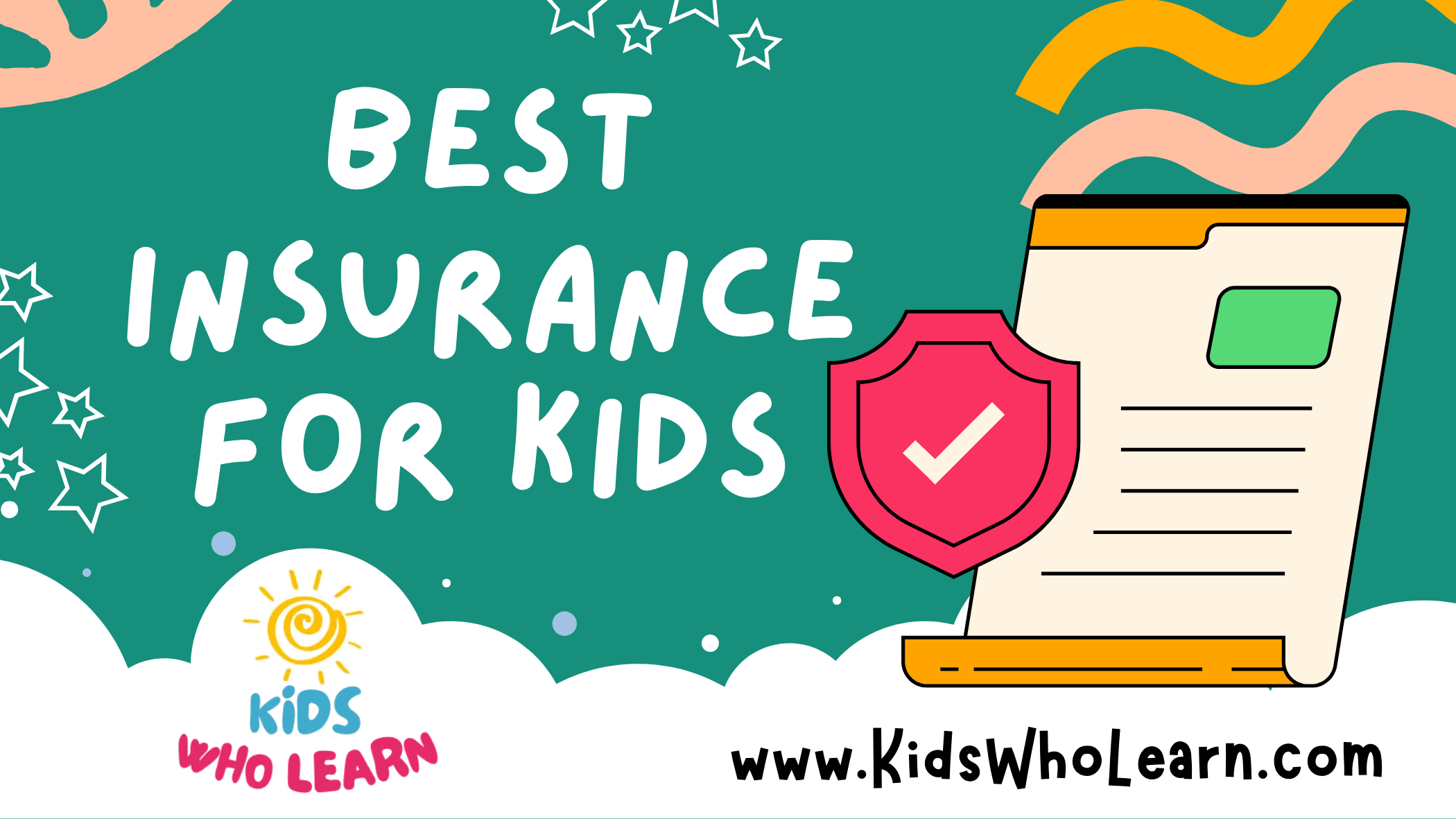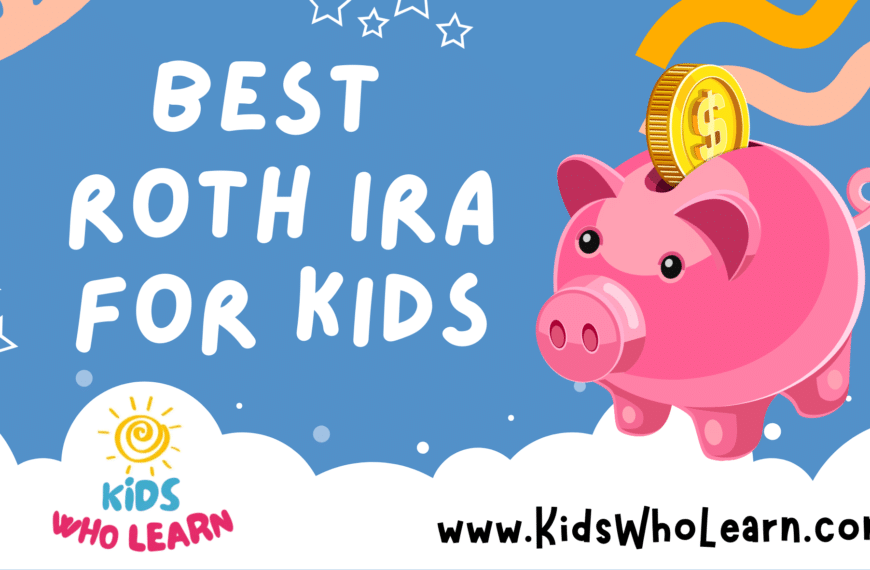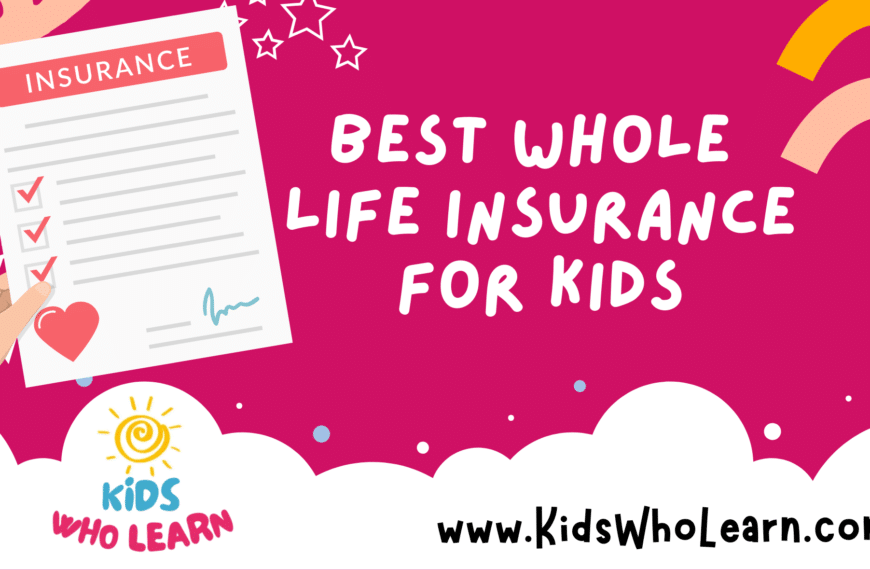Selecting the appropriate insurance for your child can ensure their financial security and provide essential coverage in the face of life’s uncertainties. Understanding the various types of insurance available for children is crucial, as each offers different advantages and levels of protection. From health to education and life insurance, parents can safeguard their children’s future by making informed decisions about the right type and scope of coverage.
Evaluating your family’s needs is the first step in identifying the best insurance for your child. This involves considering both immediate requirements and long-term considerations, including potential health issues, educational expenses, and even life’s unforeseen events. An appropriate insurance policy can offer peace of mind, knowing that your child’s financial needs will be met under various circumstances.
Parents should also consider the fine print and nuances of insurance policies, which can affect the benefits your child will receive. It’s important to balance the cost of premiums with the level of coverage provided. Remember that additional coverage options are available to tailor a policy to your child’s specific needs, and understanding policy management and benefits is key to maximizing the value of your insurance investment.
Key Takeaways
- Choosing the right insurance for your child offers essential financial protection.
- Assessing your family’s needs is fundamental in selecting the appropriate coverage.
- Understanding policy details ensures the insurance meets your child’s specific requirements.
Understanding Children’s Insurance
When considering life insurance for your child, it’s imperative to understand its purpose and the different types available to you.
Purpose of Life Insurance for Children
Life insurance for children can serve several important functions. Initially, it may provide financial support to cover unforeseen expenses in the tragic event of a child’s passing, ensuring that your family does not face financial burdens during a time of grief. Additionally, certain types of child life insurance policies accumulate cash value over time, which can offer a financial resource for future needs, such as education expenses.
Types of Life Insurance for Kids
- Term Life Insurance for Children:
- Coverage: Provides protection for a specified period.
- Cost: Generally lower premiums compared to permanent life insurance.
- Cash Value: Does not accumulate.
- Permanent Life Insurance for Children:
- Whole Life Insurance:
- Coverage: Lifelong protection as long as premiums are paid.
- Cost: Higher premiums, but can build cash value.
- Cash Value: Guaranteed growth over time, can be borrowed against.
- Universal Life Insurance:
- Coverage: Flexible coverage with the potential to adjust premiums and the death benefit.
- Cost: Higher premiums with more flexibility compared to whole life.
- Cash Value: Potential for growth is based on market rates or specified interest rates, also borrowable.
- Whole Life Insurance:
Juvenile life insurance policies, whether term or permanent, can be purchased by parents or guardians. Permanent policies for children often offer the additional benefit of guaranteed insurability for the child’s future, meaning they can extend or convert their coverage as adults, regardless of any changes in health.
Insurance Policy Fundamentals
When exploring life insurance options for your children, two main types of policies you’ll encounter are term life insurance and whole life insurance. Understanding the nuances of coverage amounts and premiums is crucial in selecting the right policy.
Term vs. Whole Life Insurance
Term Life Insurance is a policy that covers you for a specific period, known as the term. If you pass away during this term, the policy pays out to your beneficiaries. Term life policies often come with lower premiums compared to whole life insurance, but they do not have a cash value component.
- Key Features of Term Life:
- Coverage for a specified term (e.g., 10, 20, 30 years)
- Generally more affordable with lower rates
- No cash value accumulation
Whole Life Insurance, on the other hand, offers lifelong coverage coupled with an investment component called cash value. This type of insurance tends to have higher premiums, but it provides a consistent coverage amount throughout the insured’s life and can contribute to your child’s financial planning.
- Key Features of Whole Life:
- Lifetime protection
- Accumulation of cash value
- Fixed premiums with generally higher life insurance rates
Importance of Coverage Amounts and Premiums
The coverage amount is the death benefit your policy will pay out. Determining the right coverage amount involves assessing potential future financial needs.
For a child’s policy, consider costs like:
- Education expenses
- Child care
- Future income support
Premiums are payments you make to keep the insurance in force. Premium amounts will vary based on several factors, including the type of insurance, coverage amount, and the insured’s health.
- Factors affecting premiums:
- Type of policy (term or whole)
- Chosen coverage amount
- Risk factors such as health
Securing a low rate is often easier when insuring children, as they typically represent a lower risk to insurers. Frequent reviews of life insurance rates are advised to ensure that as your child’s future financial needs evolve, your policy’s coverage remains appropriate.
Purchasing Insurance for Your Child
When considering insurance for your child, it’s paramount to understand the insurability criteria, navigate the application process efficiently, and select a reputable insurer offering competitive rates.
Assessing Insurability and Medical Exams
To purchase insurance, you’ll need to assess your child’s insurability, which often involves a medical exam to determine health status. Life insurance companies require this exam to establish a baseline for coverage eligibility and rates. For example, Mutual of Omaha and Gerber Life offer policies that may require a simple medical questionnaire or a full medical exam depending on the plan.
Application Process and Rate Determination
The application process for child insurance involves providing detailed personal and health information. Companies like Aflac and American Family have streamlined applications that vary in length. Rates are then determined, with factors such as age, health, and the amount of coverage influencing the cost. Providers like State Farm and Nationwide use this data, coupled with actuarial tables, to set premium rates. Your child’s rating, assigned after the application review, reflects the risk to the insurer and directly affects the premium.
Choosing the Right Insurance Company
When selecting an insurance company, research and compare offerings from providers such as Penn Mutual, Foresters, and others. It’s crucial to evaluate:
- Policy Terms: Read the fine print for terms that best meet your child’s needs.
- Financial Stability: Opt for companies with strong ratings indicating financial health.
- Customer Service: Consider the company’s reputation for customer support.
- Premium Costs: Assess how competitive the rates are among top companies.
Choosing a life insurance policy for your child is a significant financial decision that requires careful consideration of insurability, application details, and selecting the right insurer. Make sure you conduct thorough research to ensure the company you choose offers the best combination of coverage, reliability, and value.
Additional Coverage Options
When selecting insurance for your children, considering additional coverage options can enhance their policies and secure their insurability for the future.
Riders and Added Benefits
Riders are additional benefits you can add to a basic insurance policy to provide extra coverage or features. For children, a Child Term Rider offers temporary life insurance coverage for your child under your own policy. This type of rider typically provides coverage until the child reaches adulthood, at which point it can often be converted into a permanent policy without the need for a medical exam.
- Child Rider: Adds life insurance for a child to the parent’s policy.
- Children’s Term Rider: Temporary life insurance for a child, convertible to permanent coverage.
Riders like the Guaranteed Insurability Rider allow your child to purchase additional insurance in the future at standard rates, regardless of health changes. This is also known as the Guaranteed Purchase Option.
- Guaranteed Insurability: Ensures the option to buy more coverage later.
- Term Life Insurance Rider: Temporary added coverage with a fixed term.
Investing in Future Insurability
By considering options like the Guaranteed Insurability Rider, you’re not only investing in your child’s current protection but also securing their insurability as they grow. This means that when they reach significant life milestones, such as marriage or starting a business, they can obtain more coverage without a medical review.
- Guaranteed Purchase Option: Locks in the ability to increase coverage on certain future dates or events.
- Savings Plan: Some policies may offer investment components to aid in future financial planning.
Including these riders and benefits can ensure comprehensive protection for your child and offer a foundation for their financial future.
Financial Aspects and Considerations
When choosing the best insurance for your child, understanding the financial implications is key. It’s essential to consider how premiums fit into your budget and what benefits, such as cash value or savings potential, the policy offers.
Understanding Premium Rates and Payments
Premiums are the payments you make to keep the insurance policy active. Insurance companies determine these premium rates based on various factors including the age of the child, the type of coverage, and the overall risk involved.
- Budget: Ensure that the policy’s premium aligns with your budget, keeping in mind that rates typically increase as your child ages.
- Payments: Choose a payment plan that suits your financial circumstances—monthly, quarterly, or annually.
Exploring Cash Value and Savings Plans
Cash Value: Certain types of insurance policies, like whole life or universal life, build cash value over time. This cash value grows on a tax-deferred basis, which means you won’t pay taxes on the growth until you withdraw the funds.
- Cash Value Growth: Investigate the projected rate of return on the cash value. Look for a growth rate that outpaces inflation to ensure the money grows in real terms.
- Savings Vehicle: Compare this with other savings vehicles such as a 529 college savings plan, which also offers tax-deferred growth and may provide a better rate of return for education-specific savings goals.
Remember that the right balance between premiums and potential savings will depend on your individual financial situation and objectives.
Special Circumstances and Considerations
When selecting the best insurance for your child, it’s crucial to consider their unique needs, especially if they have a medical condition, or age-related restrictions that may influence policy options.
Insurance for Children with Medical Conditions
If your child has a medical condition, it’s important to find a policy that provides comprehensive coverage for their specific health needs. Insurers might offer special plans or riders that cater to chronic conditions, making sure that your child’s treatments and medications are covered. For example:
- Pre-existing Condition Clause: Verify if the insurer covers pre-existing conditions and the associated waiting period for coverage to begin.
- Coverage Limits: Look at the maximum amounts payable for different medical services and whether they align with your child’s ongoing care requirements.
Age Limits and Policy Options for Children
Age limits play a crucial role in determining the availability and type of insurance for children. Here’s what you need to know:
- Infants and Toddlers: Life insurance policies like whole life or term life can be bought soon after birth, providing future financial stability regardless of health changes.
- Adolescents: As children grow older, certain policies may offer different benefits or savings components, which can be an important factor in your decision-making process.
Make sure to review policy documentation and insurer-specific rules, as age can affect both coverage options and pricing.
Policy Management and Benefits
When you’re considering insurance for your child, understanding how to manage the policy and the benefits that come with it are crucial for ensuring the financial security and peace of mind for your family.
Policy Ownership and Transfer
When you purchase a child insurance policy, you become the policyholder with the ability to manage and make decisions about the policy. It’s essential to designate a guardian in the event that you can no longer manage the policy.
| Aspect | Description |
|---|---|
| Ownership | The policy is initially owned by you, possibly as a parent or grandparent. |
| Transfer of Ownership | You can transfer ownership to your child when they reach an age specified in the policy terms. |
Death Benefits and Future Security
In the unfortunate event of a death, the policy provides a death benefit which is paid out to the beneficiaries. This fund can be essential in securing your child’s financial future.
- Death Benefit: A lump-sum amount paid to the designated beneficiaries (often the child or guardian).
- Future Security: Provides a safety net for expenses such as education and living costs in the aftermath of a loss.
Remember to review the specific details of the coverage and benefit limits to fully understand the scope of what the policy offers for your child’s protection.
Industry Insights
When selecting insurance for children, understanding an insurer’s financial strength and customer satisfaction ratings is fundamental. These metrics provide insights into the company’s ability to pay claims and their level of service, which are pivotal aspects of your insurance decision.
Insurer Financial Strength and Customer Satisfaction
The financial strength of an insurance company indicates its ability to meet financial commitments, including paying claims. This is particularly important for life insurance, where long-term stability is crucial. Agencies like A.M. Best, Fitch, Moody’s, and Standard & Poor’s provide financial strength ratings. For example, an A.M. Best rating of “A” or higher suggests a strong ability to meet ongoing insurance obligations.
Customer satisfaction encompasses the experiences policyholders have with their insurers. J.D. Power is a notable entity in measuring this satisfaction across several factors such as policy offerings, price, billing process, and claims experience. High customer satisfaction ratings can point to a smooth experience, especially when handling claims, which is critical in times of stress.
Table: Key Ratings Snapshot
| Rating Agency | Financial Strength | Customer Satisfaction |
|---|---|---|
| A.M. Best | A to A++ | Not Rated |
| Fitch | AAA to D | Not Rated |
| Moody’s | Aaa to C | Not Rated |
| Standard & Poor’s | AAA to D | Not Rated |
| J.D. Power | Not Rated | 1000-point scale |
Navigating Insurance Ratings and Reviews
Understanding insurance ratings involves acquainting yourself with the methodology used by rating agencies. A high rating signifies greater financial health and/or customer service quality. It is essential to review multiple ratings for a well-rounded view.
Reviews can provide you with the qualitative data behind these ratings. Look into the complaint index made available by the National Association of Insurance Commissioners (NAIC), which compares a company’s complaint statistics to the national median. A lower index indicates fewer complaints relative to the size of the insurer.
When examining life insurance rates, it’s important to compare them against the services provided. Affordable rates are attractive, but comprehensive coverage that fits your child’s needs should be the priority. Insurance ratings can help you cross-reference cost against service quality to find the best value.
Conclusion
Choosing the right insurance for your children is critical for their future security and well-being. It’s important to weigh the options carefully, considering factors such as coverage scope, premiums, and the reputation of the insurer.
- Assess Your Needs: Evaluate your family’s unique situation. Whether you’re looking for health, education, or life insurance, ensure the policy matches your goals.
- Compare Providers: Research and compare different insurance companies. Look for those with strong financial stability and customer service records.
- Read the Fine Print: Understand the policy details, exclusions, and benefits. This prevents surprises when you need to make a claim.
- Plan for the Long-Term: Consider policies that offer flexibility and growth potential. Insurance policies can sometimes serve as long-term financial tools.
Remember, investing in insurance is part of securing your child’s future. Take action today to give yourself peace of mind and provide your child with the support they might need tomorrow.
Frequently Asked Questions
When selecting insurance for your child, it is important to consider factors like coverage, cost, and the benefits of various types of insurance policies.
What factors should I consider when choosing life insurance for my child?
You should take into account the policy’s coverage options, premiums, the insurer’s financial stability, and whether the policy can grow in value or be converted into a permanent policy in the future.
How do the benefits of term life insurance compare to whole life insurance for children?
Term life insurance typically offers affordable, straightforward coverage for a set period, whereas whole life insurance covers your child for their entire life and may build cash value over time.
What are the advantages and disadvantages of purchasing life insurance for my child through my employer?
Advantages of employer-purchased plans include convenience and potential group rates. However, the coverage may be limited and it may not be transferable if you change employers.
Which life insurance companies offer the best policies for children?
Companies offering competitive child life insurance policies often have strong financial ratings, flexible coverage options, and options for future insurability. Research and compare to find the best provider for your needs.
How can I calculate the appropriate amount of life insurance coverage for my child?
Determine the amount of life insurance for your child by considering future financial needs, education costs, and any potential medical expenses that the policy needs to cover.
Are there specific insurance plans designed exclusively for children’s needs?
Yes, there are insurance plans tailored for children that can cover education, health, and life, often incorporating features like savings components and guaranteed insurability as adults













